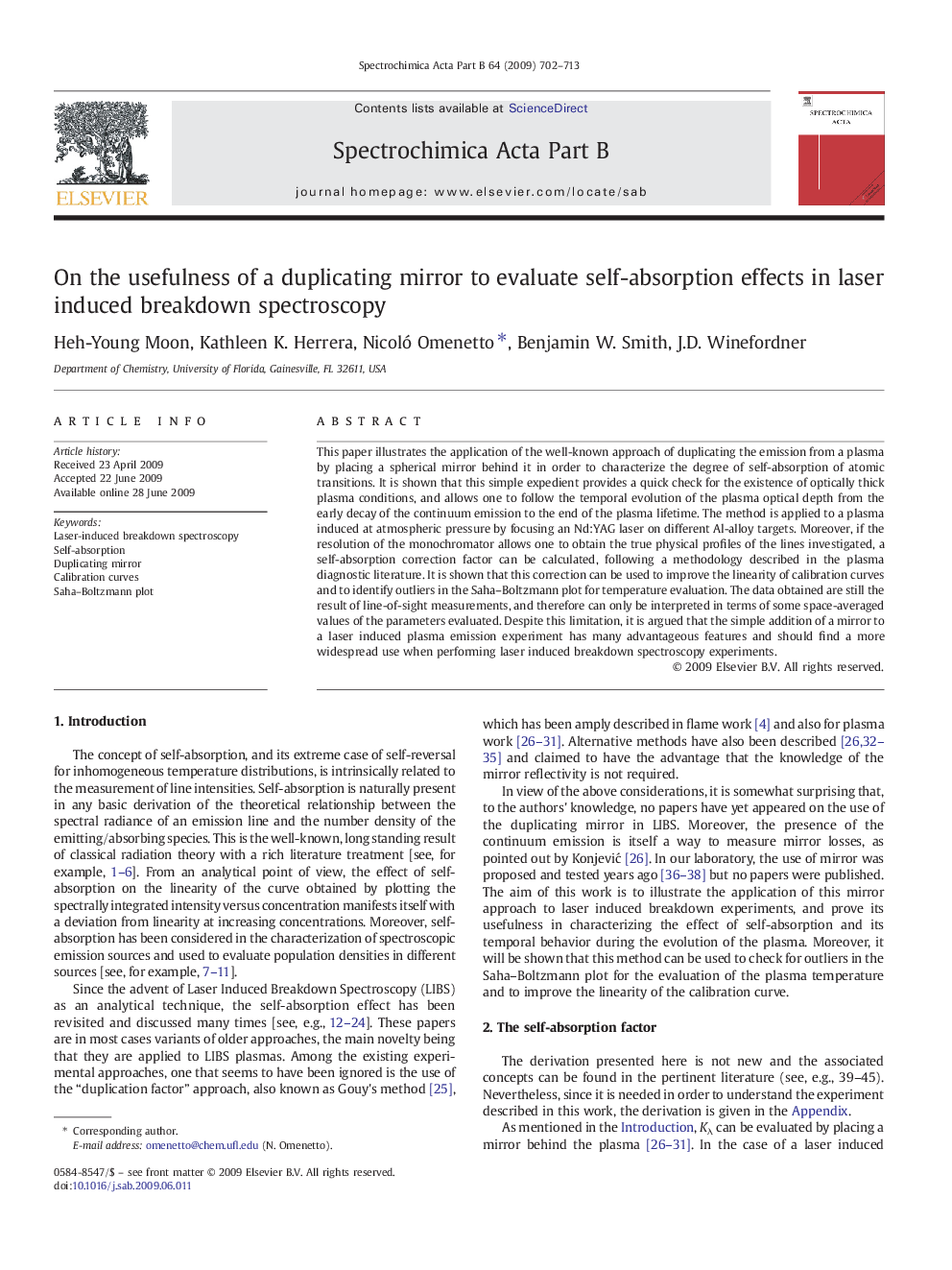| Article ID | Journal | Published Year | Pages | File Type |
|---|---|---|---|---|
| 1240949 | Spectrochimica Acta Part B: Atomic Spectroscopy | 2009 | 12 Pages |
This paper illustrates the application of the well-known approach of duplicating the emission from a plasma by placing a spherical mirror behind it in order to characterize the degree of self-absorption of atomic transitions. It is shown that this simple expedient provides a quick check for the existence of optically thick plasma conditions, and allows one to follow the temporal evolution of the plasma optical depth from the early decay of the continuum emission to the end of the plasma lifetime. The method is applied to a plasma induced at atmospheric pressure by focusing an Nd:YAG laser on different Al-alloy targets. Moreover, if the resolution of the monochromator allows one to obtain the true physical profiles of the lines investigated, a self-absorption correction factor can be calculated, following a methodology described in the plasma diagnostic literature. It is shown that this correction can be used to improve the linearity of calibration curves and to identify outliers in the Saha–Boltzmann plot for temperature evaluation. The data obtained are still the result of line-of-sight measurements, and therefore can only be interpreted in terms of some space-averaged values of the parameters evaluated. Despite this limitation, it is argued that the simple addition of a mirror to a laser induced plasma emission experiment has many advantageous features and should find a more widespread use when performing laser induced breakdown spectroscopy experiments.
